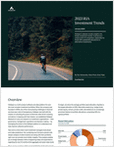“Client risk tolerance doesn’t change as the markets go up or down,” says Geoff Davey, one of the acknowledged experts on the topic. Answering a question about whether Davey’s FinaMetrica risk tolerance software might help advisor users identify specific clients with whom advisors should be communicating during this current volatile period, he suggested the question reflects a flawed understanding of what his technology reveals about clients and prospects.
“People with lower risk tolerances should be in lower-risk portfolios” already, he said in a Wednesday interview with AdvisorOne in New York, the night before he was scheduled to fly back to his native Australia after a multi-week visit to the U.S. “What’s happening in the markets now,” he said in reference to events in Japan, North Africa and the Mideast, shouldn’t be of particular concern to lower-risk-tolerant clients, since they should already be in low-risk portfolios.
Davey spent 20 years as a financial planner in Australia, building a large planning firm before selling that company, co-founding FinaMetrica in 1989 and developing its Web-based risk-profiling system. Were he still a planner today, he says that beyond talking to clients with low risk tolerances, he would be “communicating with every client.” The problem, he argues, is that clients watch CNBC or read newspapers and “hear that the market has fallen,” and jump to the mistaken conclusion that said “falling market” has affected their personal portfolios.
Assessing risk tolerance, Davey says, is “more important in getting the [portfolio] strategy right in the first place” and in then informing how the advisor communicates with the client, so that “you’re referencing and reinforcing what you’ve already discussed” with the client. There’s a deeper problem as well, he argues, that causes problems further down the advisor-client relationship road: many clients are taking steps that their advisor has recommended, but they don’t understand the ramifications of those steps.
To illustrate the problem, Davey uses a medical analogy. If you go to an orthopedic surgeon who’s recommended a knee replacement, he will tell you that the operation will likely be successful, but that you’ll experience pain, serious pain, for up to 12 months. Wanting to take care of the presenting medical condition, the patient may not fully appreciate the level of pain and the amount of grueling work that is necessary to rehabilitate that knee after the surgery. Davey suggests that the advisor’s role is not
simply to set up a financial plan—which he says only has a “half-life of, what, three years?”—but also to educate and reinforce the goals of the plan and the steps—including but not limited to the investments—that will help the client achieve that plan's goals.








 March 18, 2011 at 08:22 AM
March 18, 2011 at 08:22 AM










